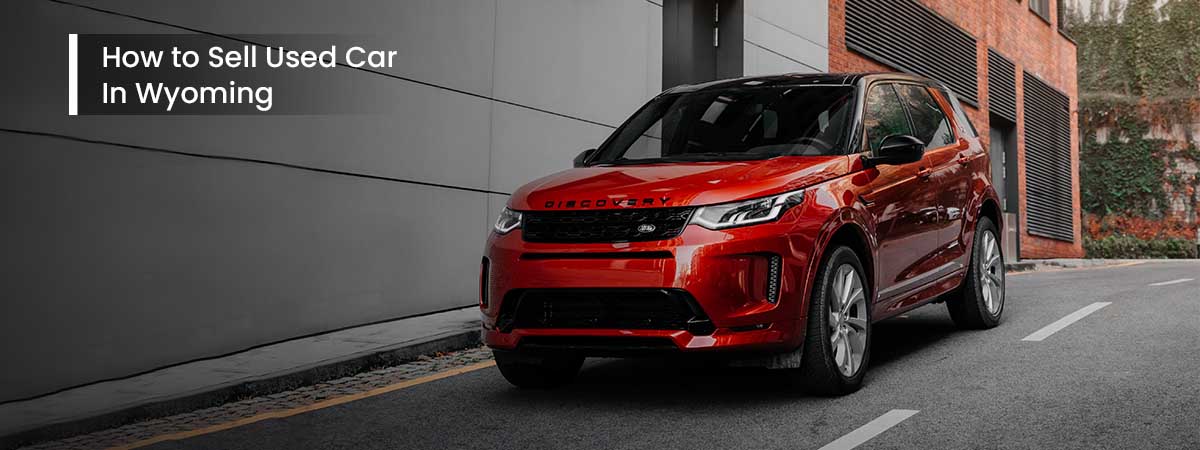How to Sell Used Car In Hawaii?

The procedures and approach for selling a car online vary by state. Discover how to sell your used car or truck in Hawaii confidentially.
If you reside on the Big Island, Honolulu, Kauai, or Maui and want to sell your old vehicle or truck privately in Hawaii, you've come to the perfect location. With an estimated 500,000 registered trucks and vehicles in Hawaii, it's no surprise that cashforcarsinc.com has been used by thousands of individual vehicle sellers in the Aloha State to sell their cars. We've explained the six stages and documents required to sell a car in Hawaii so you can sell your vehicle quickly and for the most money. Because Hawaii is made up of small islands, there are certain special laws for selling a car that we'll go through.
Remember that most states regard the car title as a legal document, so use the legal names (no nicknames) of both individuals involved as well as legible handwriting in black or blue ink. Mistakes, typos, and the use of White-Out may render the document null and worthless, so be cautious and take your time filling it out. Also get Value of your car in Hawaii
Step 1: Allow the buyer to have a third party assess the vehicle
Many private automobile buyers pay for a pre-purchase vehicle check performed by a skilled and certified auto technician of their choice. Although the buyer pays for the inspection, the seller and buyer must agree on the date and location of the inspection. If the inspection reveals any problems with the vehicle, you should save the report for your records as the seller. Although Hawaii does not require this inspection and there are no documents to fill out, it is a good idea for the buyer to have the inspection completed prior to the purchase.
Step 2: Organize and collect all vehicle papers
Find all maintenance records, the owner's manual, and other vehicle-related papers. If you can offer the buyer extensive and thorough maintenance documents, it will give the buyer confidence that the automobile has been properly and regularly maintained. You should also think about providing a car history record from a provider like CarFax or AutoCheck.
The title certificate is the most critical document to have when selling an automobile. If a lien exists on the title, the lienholder must release interest in the vehicle before it may be sold. This can be accomplished by selling the automobile, either by paying it off or obtaining a lien release from the lienholder. The lienholder must complete Section B on the back of the title for vehicles that have liens.
Step 3: Create a Bill of Sale
A bill of sale is not required for most private-party automobile sales in Hawaii. A notarized bill of sale is necessary if you are selling an automobile that is not titled in your name in Honolulu County. The official paperwork for this is Form CS-L (MVR) 40. If your name is on the title of the vehicle you're selling, you may legally skip this step, but it's always a good idea to have a signed bill of sale and for the seller to keep a copy as proof that the automobile has legally changed hands.
Step 4: Change the title
If the vehicle's title is lost, stolen, or badly damaged, you can apply for a duplicate or replacement title by submitting form CS-L (MVR) 10 for Honolulu county for a $10 fee, form DMVL580 for Maui county (which must be notarized) for a $10 fee, or the Application for Duplicate Title form for Hawaii county for a $5 fee. All forms are only accessible at your local DMV office in Kauai County.
Both the buyer and the seller must complete the applicable areas on the back of the title. This information contains the buyer's and seller's legal names, addresses, and signatures, as well as the date of the transaction and the odometer reading. When this is filled out correctly and legibly, the buyer can easily transfer registration and obtain a new plate. If there are two joint owners (sellers), each must date, print, and sign their name.
If you have a certificate of title from Oahu, Maui, or Kauai, the registered owners must fill out Section A on the front of the title. All vendors' signatures will be verified by Hawaii County. The signature(s) must be the same, or the transfer will be denied. It is advised that the seller execute Section A (on the seller's title) in front of a Notary Public or that the seller accompany the buyer to finalize the title transfer. The seller will hand over the endorsed certificate of title, the current certificate of registration, and the certificate of safety inspection to the new owner.
When giving an automobile to a relative, you can transfer the title using the identical procedure explained here. It's largely the same process for inheriting a car, but you'll need to file paperwork about the inheritance with the county along with the title of the vehicle in issue.
The National Highway Traffic Safety Administration's (NHTSA) odometer disclosure standards for private car sales in Hawaii were modified in December 2020. Any vehicle of the model year 2011 or newer (2012, 2013, etc.) that is transferred between January 1, 2021, and December 31, 2030, will require an odometer disclosure. Beginning January 1, 2031, every vehicle less than 20 model years old will be required to have an odometer disclosure. Previously, the NHTSA only mandated disclosure for the first ten years. Cars manufactured before 2010 are exempt from odometer disclosures.
Step 5: Submit a Transfer Notice
In Hawaii, a Notice of Transfer form CS-L (MVR) 53 for Honolulu County, form DMVL565-2-09 for Maui County, this form for Hawaii County, and this form for Kauai County must be completed and submitted to the DMV. Simple details about the car being sold, the buyer and seller's names and addresses, and the seller's signature are all that is required on this form. Within 10 days following the sale date, mail the completed paperwork to the address on the form. Failure to do so will result in a $100 fine.
Step 6: Take off your license plates and cancel your insurance
Before passing over the car to the buyer, the seller must remove the license plates. If you do not, you may be held accountable for any infractions that occur after the buyer takes ownership of the car. To avoid paying for insurance on a car you no longer own, cancel your insurance as soon as you remove your plates.
Visit the Hawaii Department of Transportation's website for further information.
The Easier Way to Sell Your Car
Now that you've learned everything there is to know about selling a car in Hawaii, it's time to determine where to list it. Selling your car is simple with Cashforcars, Inc. With ready-to-sign state documentation, encrypted chat, and more, our platform provides all the tools and recommendations you need to make the transaction a breeze.How To Sell Used Car In DC? By clicking this page, you will get information about how you can sell a car in the District Of Columbia.





